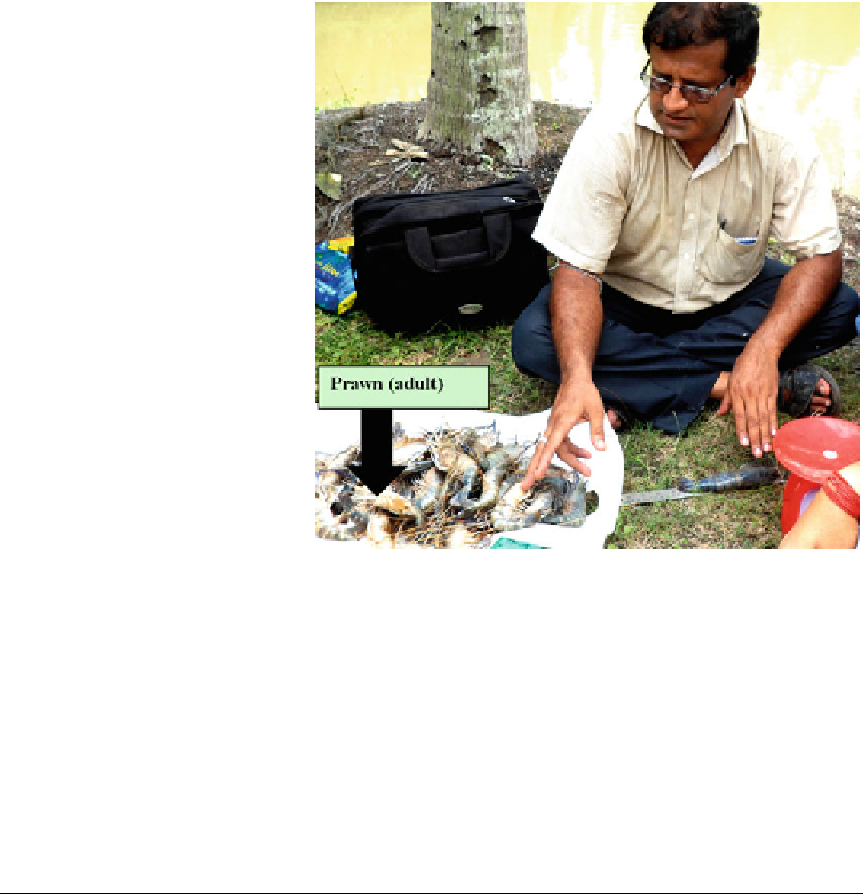Environmental Engineering Reference
In-Depth Information
Fig. 2.21
Adult stage
(prefers substrate) of
Macrobrachium
rosenbergii
Table 2.8
Estimates of mangrove areas
Reference
Reference year
a
No. of countries included
Estimated total area
FAO/UNEP (
1981
)
1980
51
15,642,673
Saenger et al. (
1983
)
1983
65
16,221,000
FAO (
1994
)
1980
1985
56
16,500,000
-
Groombridge (
1992
)
1992
87
19,847,861
ITTO/ISME
b
(
1993
)
1993
54
12,429,115
Fisher and Spalding (
1993
)
1993
91
19,881,800
Spalding et al. (
1997
)
1997
112
18,100,077
112
c
Aizpuru et al. (
2000
)
2000
17,075,600
FAO (
2003
)
2003
112
14,653,000
a
Except for FAO/UNEP (
1981
) and Aizpuru et al. (
2000
), the reference year is the year of the publications in which the
estimate is cited, not the weighted average of all the national area estimates
b
Combined gure from three publications by Clough (
1993
), Diop (
1993
) and Lacerda et al. (
1993
)
c
New estimates were provided for 21 countries, and for the remaining countries the study relied on Spalding et al.
(
1997
)
3. Basin mangrove forests
stunted mangroves,
located in the interior of swamps.
4. Hammock mangrove forests
—
such as muddy sediment, frequent water
exchange, high rainfall and high humidity, pre-
vailing in the areas. The best examples are
mangroves of Sundarbans (India and Bangla-
desh), Malaysia and Indonesia. In contrast, the
arid regions of Arabian Gulf countries, Pakistan
and Gujarat (India), where the sediment is sandy,
highly saline and poor in nutrients have only
dwarf mangrove stands.
similar to basin
type, but existing in more elevated sites.
5. Scrub mangrove forests
—
—
dwarf stands of
at coastal fringes.
The sheltered coasts support a luxuriant
growth of mangroves and a higher biodiversity
and this is because of the favourable conditions
mangroves, existing on
fl











